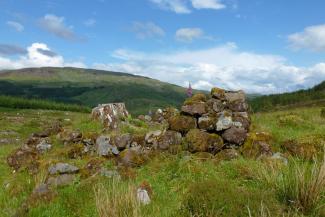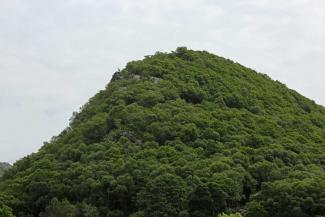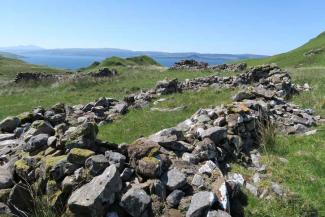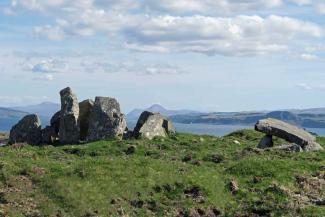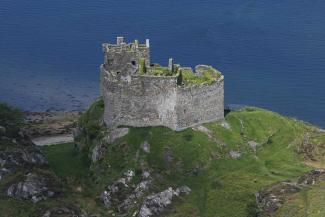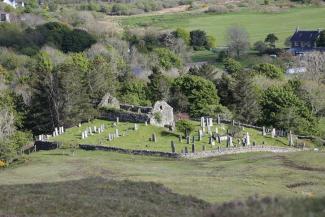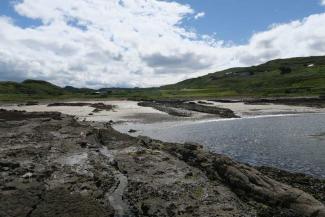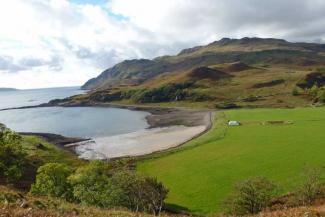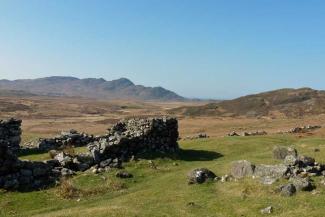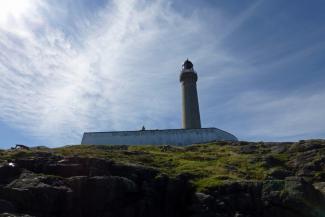Take the opportunity to visit Ardnamurchan Lighthouse, the most westerly lighthouse on the British mainland. The lighthouse was designed by Alan Stevenson and built in 1845. It is unique in the world in being the only lighthouse built in an Egyptian style; it has a 36 metre pink granite tower with Egyptian stylised figurines decorating its lamp base. The flat-roofed keepers' dwellings and store houses are found at the base of the tower, with an open courtyard, where the Principal and Assistant Lighthouse keepers and their families lived a subsistence lifestyle. There is also a barn,…
Historical Sites - Ardnamurchan in a Nutshell
Delve into the history and heritage of the Ardnamurchan peninsula and beyond. Take time to discover Neolithic chambered cairns, Bronze Age standing stones and Iron Age forts. Lose yourself in the romance of medieval castles. Wander around deserted settlements to discover the devastating impact of the Highland clearances on the local inhabitants and their way of life. Become acquainted with the spread of Christianity across the Highlands and the importance of the church in the local community. Revel in the uniqueness and location of a 19th century lighthouse. These are just a few of the delights that await you as you explore the social history of Ardnamurchan that began in the Mesolithic period, some 8000 years ago.
We hope that this small selection of scheduled monuments and townships will give you an insight into the lifestyle, culture, traditions and allegiances of some of the inhabitants of Ardnamurchan and beyond.
Take time to visit some of these historical sites when you are wild about Ardnamurchan.
Take the opportunity to visit Greadal Fhinn, the remains of a Neolithic chambered cairn on the summit of a small knoll. The mounded cairn is roughly circular in outline and located on croft land 300m NW of Ormsaigmore, near Kilchoan. There are two burial chambers within, one of cist-like construction, and the other a passage-grave. The larger passage-grave consists of seven upright stones, a capstone, plus two stone stumps. The burial chamber, which is aligned ESE and WNW, would have been entered through a short passage. The smaller chamber is rectangular in shape with four slabs and a…
Glendrian ('blackthorn glen') is a small remote crofting township surrounded by a circle of low hills on the Ardnamurchan peninsula. The hills are the ring dykes of the Ardnamurchan Tertiary Volcanic Complex and are of interest in their own right. This scheduled monument consists of over 17 unroofed buildings, scattered over the low lying ground. The buildings consist of dwelling houses of a mostly but-and-ben design, with byres, barns, shieling huts and other associated buildings. There are also some enclosures, a kail yard and the remains of a plot and field agri-system. A more…
Enjoy a lovely walk to the ruined church of St Comghan at Kilchoan. St Comghan and the adjacent burial ground overlook the village of Kilchoan and Kilchoan Bay. Most of the church dates from 18th century but some features of an earlier medieval church (12th or 13th century) are evident in the west gable-wall. The Church is dedicated to the Irish monk St Comghan (Comgan, Chomhghain); one of several churches he established on his travels in the Highlands and Islands. St Comghan was eventually replaced by a new building in a nearby location in 1831. Details of history of the church can…
Swordle Bay on the north coast of the Ardnamurchan peninsula has been the subject of a long running archaeological research programme carried out by the Ardnamurchan Transitions Team, which has focused on the excavation of key archaeological sites in the area. Sites excavated so far include a Neolithic chambered cairn (Cladh Aindreis), a Bronze Age kerbed cairn, a Bronze Age ring ditch, an Iron Age site Dun (Dun Mhurchaidh) and the site of a Viking boat burial.
The Neolithic chambered cairn (Cladh Aindreis) dates from around 6000 years. The Clyde-type chambered cairn is situated on…
The settlement of Bourblaige is one of the best preserved cleared settlements on the Ardnamurchan peninsula. The settlement is located on the south-east flank of Ben Hiant, between Camus nan Geall and Maclean's Nose.
The village consists of approximately 36 unroofed buildings of drystone construction (dwelling houses, barns, byres), with the remaining walls between 1 and 2 metres high, scattered across an area of 400m x 300m. There are also two enclosures, a field system and a head dyke. The buildings are mostly oblong with rounded corners, with the largest building measuring 12m…
Camas nan Geall (Bay of the Strangers) highlights the long history of settlement on the Ardnamurchan peninsula with historic structures including a prehistoric standing stone, Neolithic chambered cairn, early medieval cross-incised stone, early bronze age to Pictish fort (on the promontory), a post medieval cruck (curved timber) framed cottage, a farmstead, a sheep fold, a township and an18th century burial ground. As such, this is a site well worth a visit.
Take the track down towards the sandy beach at Camas nan Geall to explore the remains of Neolithic chambered cairn at the…
Take time to explore a medieval castle located on a rocky outcrop on the tidal island of Eilean Tioram, at the confluence of the River Shiel and Loch Moidart. The castle is enclosed by a thick round-angled, pentagonal defensive curtain dating from 13th century. Within the walls, there are a range of residential buildings (great hall, kitchen, cellar, sleeping apartments etc) of later periods, each reflecting the fashion of the era and the desire for the "gentrification" of the castle. The castle was entered by small gate on the landward side, above which is a small defensive machination.…
Shielfoot Torr consists of a vitrified fort on a wooded ridge overlooking the River Shiel. The fort conforms to the contours of the ridge and consists of heavy vitrified wall up to 4.5 metres in thickness and standing to height of 0.5 metres. A sub-rectangular enclosure is evident at the south end, and there is an oval enclosure at the northwest side which probably served as a small dun with a timber-lace wall. Although there is some doubt as to the chronological relationship between the fort, dun and enclosure, it is likely that the small dun was constructed on the ruins of the univallate…
Wander through the abandoned crofting township of Aoineadh Mòr, a casualty of the Highland Clearances in 1824. This remote settlement near Lochaline on the Morvern peninsula consists of abandoned buildings which are scattered along a river valley. The buildings include family homes, corn drying kilns, winnowing barns and kail yards. The life of this settlement and the trauma of the evictions have been brought to life through the use of interpretation boards and an audio account based on the diary of Mary Cameron (a former inhabitant). Two short walks have been named in remembrance…

